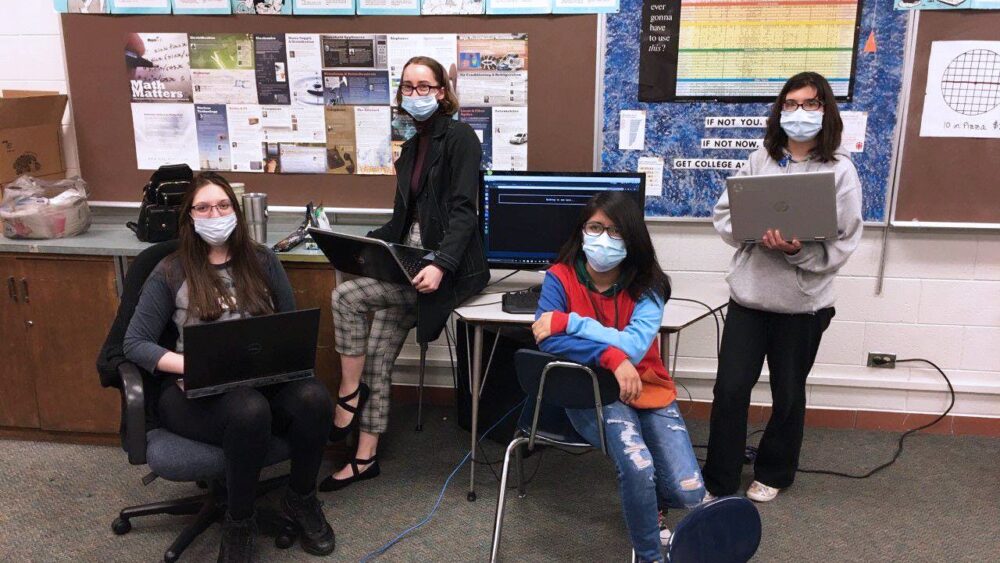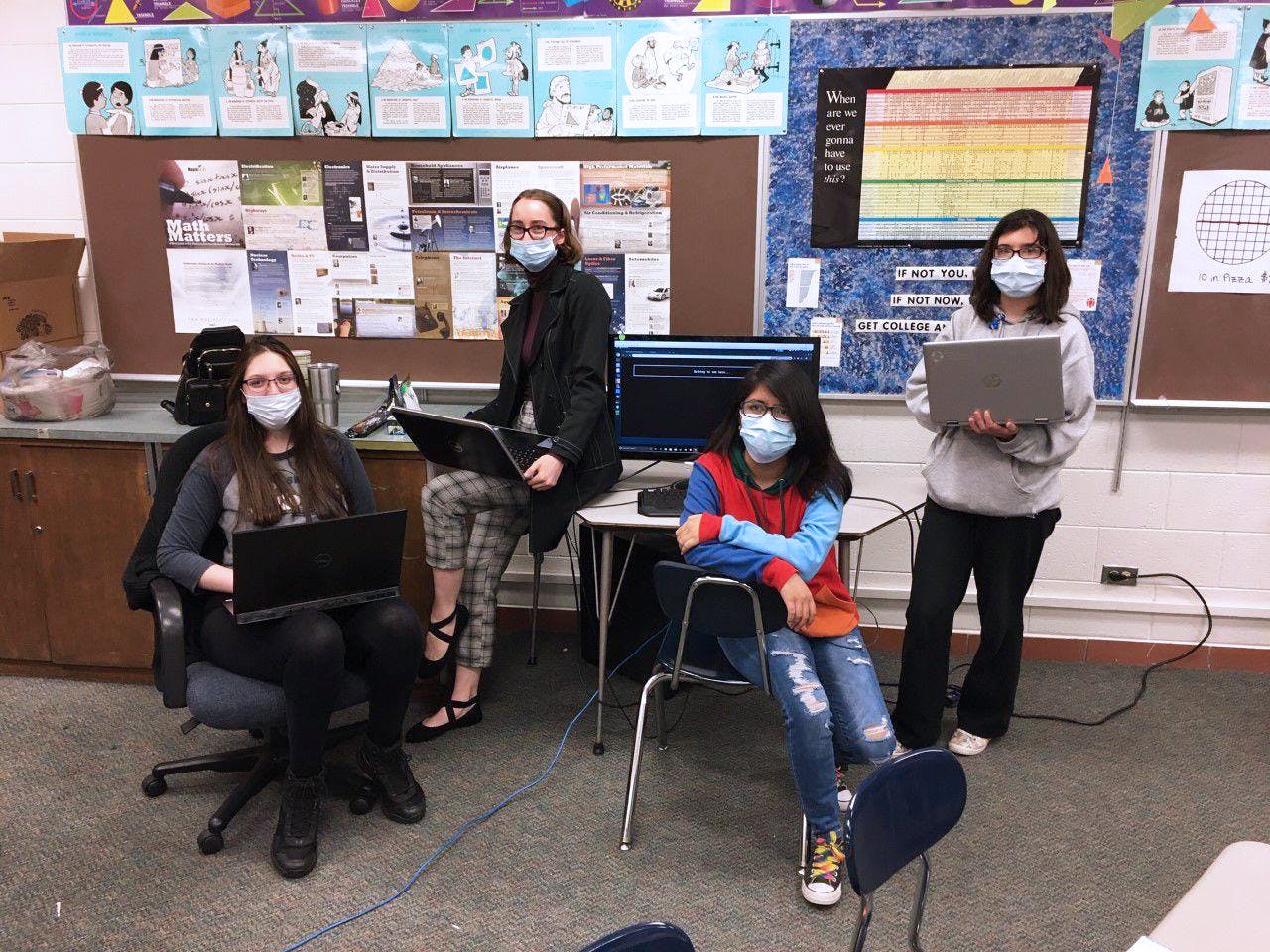Q: Tell us about the work done at the Idaho National Laboratory (INL). What are its areas of research and its mission?
A: INL is the nation’s leading laboratory for nuclear energy research, development, demonstration and deployment, and we are engaged in the mission of ensuring the nation’s energy security with safe, competitive and sustainable energy systems and unique national and homeland security capabilities.
Q: Now tell us about your job at INL. Your office deals with student outreach, teacher professional development and family engagement, to name a few areas. How did you conduct these missions both pre-COVID and now, with the pandemic restrictions?
A: The mission of INL’s K-12 Education Enrichment Programs is to inspire Idaho’s future STEM workforce; impact students, teachers and families by integrating best practices in STEM education; and empower employees to become STEM mentors to transform K-12 Education Enrichment into a driver for innovation.
Pre-COVID, our team and other employee volunteers spent a lot of time visiting schools, attending conferences and hosting events to help meet these goals. With new restrictions, we have pivoted much of our outreach to be held in a virtual environment.
In spring 2020, we quickly generated a suite of at-home lessons that we published on our website and through social media for parents and educators to help students learn at home. We have also held webinars and events online, and we continue to participate in outreach at virtual conferences.
Other important elements of our program, such as our grant opportunities, are still open to Idaho educators through our website. We consistently look for creative ways to continue to have an impact in our area while keeping safety as our top priority.
Q: And, in the midst of the pandemic, you are going forward with your Coding Coalition. What is the coalition, what is its mission, how does it work and whom does it benefit?
A: In its third year, INL’s Coding Coalition lends itself to virtual learning and collaboration through an online platform and competition. The coalition is available to Idaho educators leading extracurricular computer science clubs interested in cybersecurity. This year, we also expanded the coalition to include clubs in Texas through our San Antonio office.
To become part of the Coding Coalition, teachers commit to serving as an adviser to a team or individual competing in a CyberStart America program to receive $1,500 in funding to support adviser stipends, equipment or supplies and access to an INL professional who serves as a cyber guide for the team. Students learn cybersecurity basics through a series of challenges of increasing difficulty using four programming languages, puzzles and cryptography skills in a competition/gaming environment.
This program is designed to help students explore a passion for cybersecurity or computer science, win recognition for their schools and qualify to win prizes and scholarship money. No prior experience is required, just an interest in problem-solving, puzzles or basic coding. To be eligible, schools just need to assemble a team willing to participate and then register for INL support.
Q: You mentioned CyberStart America. What is this extracurricular cybersecurity competition, and how does the coalition assist participants?
A: Sponsored by the SANS Institute and the National Cyber Scholarship Foundation, CyberStart America is an innovative, free cybersecurity competition designed to help students explore a passion for cybersecurity or computer science, win recognition for their schools and qualify to win prizes and scholarship money.
The program targets female students specifically to recruit them to explore cybersecurity and computer science education and career pathways. Student teams work to solve a series of online challenges and puzzles that teach basic coding and cybersecurity skills. Any student team that completes the first five challenges will be invited to join the national competition for a chance to win prizes and scholarships.
INL’s Coding Coalition provides $1,500 in grant funding, resources and INL employee support to the first 30 eligible advisers who assemble an extracurricular club that has committed to participating in a CyberStart America program.
Q: The INL pairs an employee with each extracurricular high school club that qualifies for the Coding Coalition. What does the INL employee do to assist the club members and advisers? How did you recruit INL employees to participate?
A: The INL employees work with the advisers and clubs they are paired with to determine their involvement, but they are often available to attend meetings, answer student questions and share their experience with computer science or coding.
To recruit INL employees, we ask for volunteers from across the laboratory through an internal memo. We also work closely with our National & Homeland Security and Information Management groups to recruit, as employees from these groups are most likely to have a background in computer science or coding.
Q: Why is it important for the INL to participate in the Coding Coalition? What skills are developed in high school cybersecurity competitions that might benefit youth participants down the road, and the laboratory? What evidence do you have of a positive impact from this program?
A: It’s important for us to engage with and support programs such as CyberStart America that align with INL’s mission and education program goals. Students learn basic cybersecurity and coding skills and also have the chance to explore subjects and passions they might not get to in their normal school classes.
For our lab, it’s a great way to build a talent pipeline right here in Idaho and inspire the next generation in STEM. We have seen positive results from the program; for example, a team from one Idaho high school that participated in last year’s Coding Coalition finished 29th nationally in the final competition, out of about 300 participating teams.
Q: What advice would you give institutions similar to yours that might want to participate in community outreach programs, especially during the pandemic?
A: We’ve had to look at outreach in entirely new ways during the pandemic, but if you’re adaptable and look for new opportunities to engage, they certainly exist.
We know that students are spending a lot more time learning online, sometimes logging 10 or more hours of screen time in a day, so we have also focused on generating “unplugged” learning including home STEM projects and enrichment activities. These are designed by STEM teachers and use materials and supplies commonly found around the home and aligned to education standards. We now have a library of nearly 60 downloadable STEM projects.


Comments are closed.